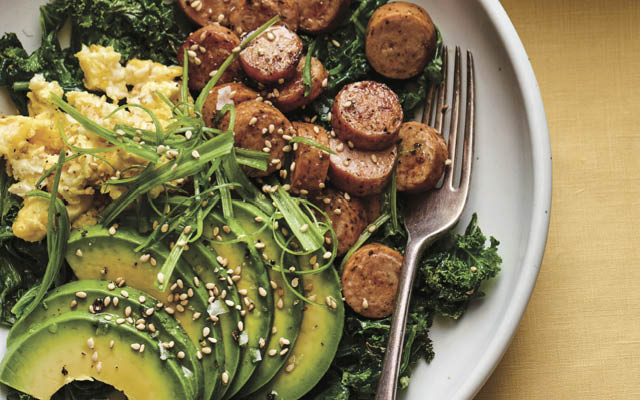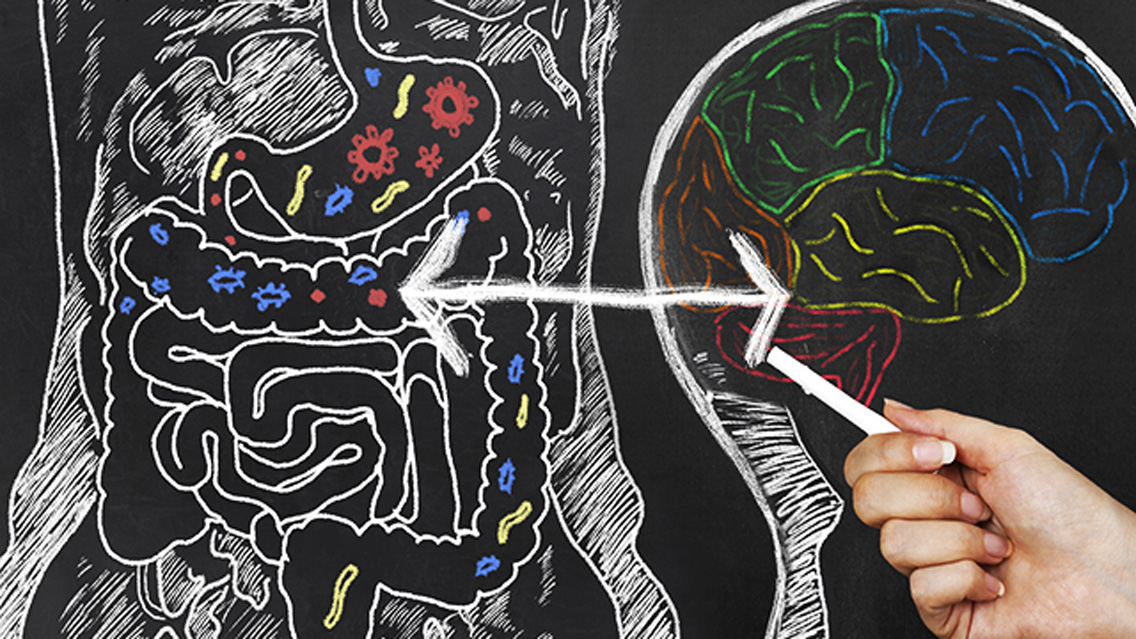Germs are bad for you, right? The frightening image of a world filled with invisibly small creatures that can invade your body and make you sick – even kill you – has been drummed into you since you were a kid.
So it can be hard to accept the startling truth that billions upon billions of bacteria, viruses, and fungi (known as our microflora) routinely live right up close and personal, on and in our bodies, without causing so much as a hiccup to our health, and in many cases enhancing it.
These little lifeforms thrive on our skin, hair and armpits; in our mouths, noses, airways; and in our urogenital and gastrointestinal tracts. Indeed, they occupy just about any part of the human body that’s favorable to their survival.
In fact, the human cells in an adult’s body are far outnumbered (by about 10 to one) by bacterial cells alone. So, in essence, you are not so much an individual as you are a mobile home for a teeming ecosystem of hundreds of other species.
Feeling itchy already? Don’t worry: Medical scientists are now convinced that most of these fellow travelers are vital to keeping you healthy – even if the ways that they interact with each other (and with you) are so complex, subtle and mysterious that they’re still poorly understood.
Must-Have Microflora
Of course, not all your microflora are full-time do-gooders. Some of the little creatures in our bodies are parasites that we tolerate (and mostly never notice) because they cause so little trouble. A few are disease-causing germs that are usually fairly benign and that cause problems only when our immune defenses drop (e.g., we become ill with another malady or suffer a wound). But the majority of these species are with us because they play important roles in staggeringly complex, symbiotic relationships that benefit both us and them.
We know these microbes get a home and an energy supply from us, but what do we get out of the deal? For starters, experts in the field say it’s important to understand that our microflora apparently act like members of any ecosystem, actively keeping each other in check and making it tough for more dangerous invaders to take hold – simply by being there first. It’s a bit like how weeds and exotic animals find it hard to invade an ecologically robust and healthy natural environment, a phenomenon known as “colonization resistance.” Essentially, the best real estate and resources are denied to newcomers because they are already taken.
That’s one good reason, basic hygiene aside, why you shouldn’t strive to be too scrupulously clean: Harsh soaps, scrubs, sprays and mouthwashes won’t rid you of even a tiny fraction of these critters anyway, and upsetting their balance could do more harm than good. In many cases, you need the assistance and life support these organisms offer. As unappealing as they may sound, your microflora are an integral part of your front-line defenses against far more dastardly germs.
By far the richest environment for bacteria in our bodies is our gastrointestinal tract. At least 400 species of bacteria typically live there, and it’s plain that without them we would have far more trouble with digestion, food poisoning and infectious diseases.
One reason our bodies tolerate these bacteria’s continual presence is because when they latch onto our gut linings they seem to stimulate chronic low-level responses that keep the immune system on alert for other disease-causing species. They can help scare off would-be marauders like Candida albacans (a yeast) and food-borne bacteria like salmonella before they overgrow. They also help our bodies maintain a correct acid/alkaline balance, which supports proper metabolism and makes us less vulnerable to sickness of all kinds. It is also known that healthy bacteria in our GI tract assist in completing some digestive processes and help produce certain vitamins within the body.
The bottom line is that we need these little critters every bit as much as they need us, so it’s wise to treat them with a certain amount of respect.
Scientists have shown that specially bred “germ-free” laboratory animals can survive without microflora &dnash; but they are sickly because their immune systems and the linings of their intestines are poorly developed.
It’s well known, too, that we sometimes get diarrhea or yeast infections as a side-effect of a course of treatment with antibiotic medicines. That’s because they not only kill the germs that are causing our infection, they also kill off the beneficial microbes in our gut. This briefly clears the way for disease-causing bacteria to multiply and cause trouble, at least until the beneficial ones make a comeback and restore balance.
Clearly, avoiding the unnecessary use of antibiotics — something you should discuss with your doctor – is one way to maintain a healthy balance in your intestinal microflora. But that may hold true for other parts of the body as well: traces of antibiotics and some other drugs taken orally can be expressed through your sweat, for example, which may upset the balance of species living on the skin.
Probiotics
Many livestock producers use the colonization-resistance principle to improve the health and productivity of food animals. They deliberately introduce their livestock to living bacteria – known as probiotics – that can confer a health benefit.
Using probiotics has been shown, for example, to prevent chickens from becoming infected with harmful strains of intestinal bacteria, such as salmonella and E. coli, and to promote greater resistance to disease, thus lifting egg yields in hens. The same approach has been shown to increase milk yields in dairy cattle.
Beneficial bacteria almost certainly play a similar supportive role in humans. It is now well documented that when babies emerge from the sterile conditions of the womb they are rapidly colonized by many species of microflora, starting immediately with those they encounter from their mothers in the birth canal.
It’s thought that baby girls are colonized during birth with a vaginal flora that stays with them for life and protects them from infection by germs. Species known as bifidobacteria rapidly colonize and overwhelmingly populate an infant’s intestines within days of birth. They may first arrive there from their mothers’ nipples during breast-feeding. Human breast milk is also thought to contain a bifidus factor, which selectively fosters the growth of bifidobacteria.
Babies born vaginally and then breast-fed seem to get fast protection from intestinal disease and a better head start in life in this way. There’s evidence that their guts are colonized faster than those who are caesarean-born and that they suffer fewer gastrointestinal infections than bottle-fed babies.
It’s been suggested that infant milk formula may soon be supplemented with natural compounds, known as “prebiotics,” that help promote the growth of specific beneficial bacteria already living in the intestine, acting like a kind of fertilizer. These prebiotic compounds are a built-in part of a normal, healthy adult diet. They are mainly non-digestible sugars, such as inulin, which are found in vegetables such as leeks, onions and garlic. Having these foods as a regular part of your diet should promote your good ecological health.
Probiotics (like acidopholus, lactobacilli and bifidobacteria) have been recommended by natural-health practitioners and sold in health-food stores for years now, but increasingly they are becoming available in mainstream food and drug stores. In fact, the high level of global research activity by hundreds of food companies hints at this becoming one of the boom segments of the food market in coming years.
Food companies are no doubt keen to capitalize on the growing consumer interest in probiotics that is being fueled by medical research. There’s good evidence, for example, that probiotics can help to restore gut microflora after antibiotic therapy, to support digestion, and to reduce the duration of rotavirus diarrhea and gastro-enteritis in infants. Probiotic therapy has also shown some early success in treating inflammatory bowel disease.
Other exciting medical developments are further down the pipeline. Doctors may one day prescribe a course of treatment with live bacteria instead of drugs. During a routine dental check-up you may have your mouth sprayed with probiotic bacteria intended to out-compete the ones that cause tooth-enamel decay. Potential medical applications include the treatment or prevention of ear, urinary tract, skin and surgical-wound infections, reducing blood cholesterol levels, and even the prevention of some cancers. Probiotics may also find expanded roles in treating food allergies, reducing hypertension or as carriers for vaccines.
Friendly Fermentation
The concept of probiotics began a century ago with the Nobel Prize-winning Russian scientist Elie Metchnikoff, who suspected that Bulgarian peasants lived long lives because they consumed fermented milk products, which contain high numbers of living lactobacillus bacteria. His research led to the long-standing consumer acceptance of yogurt, in particular, as a healthy dairy food.
The lactobacillus species of bacteria in yogurt have a long and safe history of human use, but they are not normally able to establish a permanent home in the human gut – largely due to colonization resistance. Like many probiotics, they therefore must be consumed regularly, perhaps even daily, in order to confer a consistent health benefit.
Probiotics are currently most popular in Europe and Japan, where food-industry research and health-food companies have produced a wide variety of products featuring specially selected strains of beneficial bacteria and prebiotic food supplements.
In the United States, Dannon recently introduced a probiotic-enhanced dairy drink called Actimel. In coming years, we can expect to see probiotic cheese and even ice cream made available as mass-market products.
Already many yogurts feature added bacterial strains that makers claim are beneficial. And as noted, you can also buy probiotic bacteria as supplements, freeze-dried in capsule form or alive in refrigerated solutions sold at some health-food stores.
(See “How to Make Coconut-Water Kefir, Greek Yogurt, and Other Fermented Foods” to learn how to make your own.)
Help or Hype?
If you’re considering using these products, it’s best to do some homework and seek an educated opinion from a health professional first. That’s because despite all the increasing interest, the science behind probiotics and their various applications is still sparse.
Critics say that the validity of much of the research into their efficacy goes unquestioned and that commercial secrecy prevents full scientific scrutiny. Moreover, their role in human nutrition is still only vaguely understood, and the selection of probiotic strains by the food and health-food industries often seems based mainly on commercial and technical considerations (vs. efficacy for specific health applications). Because the necessary tools to monitor their performance in real-life situations are still being developed, regulations to establish what genuine health claims can be made for them are still patchy internationally.
Yet probiotics are already being widely embraced by people with food sensitivities, digestive troubles and yeast or fungus problems. Many health practitioners are recommending them. Meanwhile, commercial pressure for an increasingly wide range of species and strains to be included in more and more foodstuff is bound to grow. Independent nutritionist Rosemary Stanton, based in Sydney, Australia, is watching the emergence of probiotics with interest.
She believes the science behind them needs a lot more development before they can be given much credence, and she cautions that the food industry is focusing on probiotics more as marketing tools than as genuinely beneficial food additives.
“There does seem to be lots of potential there but it’s a very complicated area,” Stanton says. “I think it sounds good and I want to be a believer, but when you read the studies, they don’t match the headlines.”
The industry is pushing to be able to make more health claims for these products but, based on what we know so far, Stanton thinks it would be foolish to allow that.
“I’ve got no problem with yogurt because you get all those other goodies such as protein and calcium when you eat it,” she says. “But I’d hate to see probiotics being added to yogurt bars and ice cream and so on in an attempt to make them seem healthier than they are.”
It may be more appropriate to use probiotics as nutritional supplements rather than putting them into food. For one thing, probiotic supplements are available in higher potencies and a wider range of strains. Some are also available in robust capsules designed to help them survive the stomach’s acid environment and get through to the intestine where they’re meant to do their stuff.
The future of food technology aside, for right now, having healthy habits, staying fit, and eating a wholesome, varied diet are among the best and most important ways to keep your personal ecosystem healthy. Seeking out naturally fermented foods (e.g., yogurt, kiefer, breads made from fermented grains, fermented bean products like miso, tempeh, and unpasteurized pickled vegetables like sauerkraut and kimchi) is recommended. Moderating your sugar and alcohol intake and maximizing vegetable intake can also be helpful in creating a pH-balanced environment in which healthy microflora thrive.
While those with digestive difficulties and compromised immune systems may find probiotic supplements helpful, the current bottom line for the health conscious is that unless you’ve had antibiotic medication or experienced some other disruption of your biochemistry, you probably won’t need them. That’s because nature has already endowed you with a veritable army of helpers stationed right in your body.
In the never-ending fight against germs, isn’t it comforting to know that at least some of them are on your side?
This article originally appeared as “Gut Check” in the May/June 2003 issue of Experience Life.




This Post Has 0 Comments